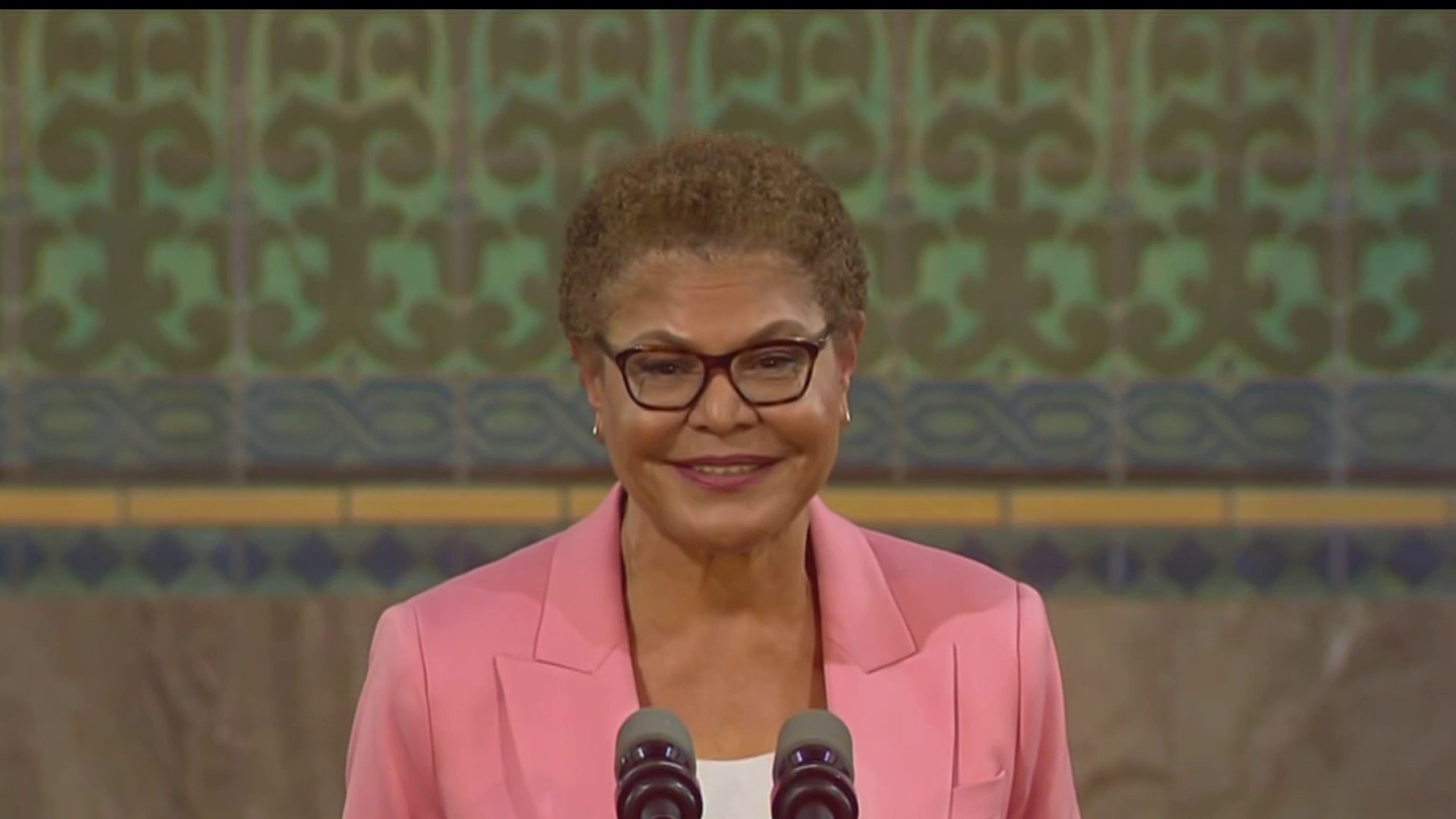This transcript was first published on Nov. 27, 2007.
INTRODUCTION: Regular gas at the pumps topped $3.40 a gallon this week. That's why everybody's scrambling to find alternative fuels. One alternative is about to come to California. But, say critics, it could give us more bang for the buck than we bargained for.
PAUL MOYER: An incinerated Cleveland neighborhood, 1944. A burnt-out factory in Algeria, 2004.
In each case the destructive force was an incendiary genie-in-a-bottle known as liquefied natural gas, or LNG.
LORETTA LYNCH: Each individual tanker is essentially a floating bomb.
PAUL MOYER Critics say LNG is always a catastrophe waiting to happen -- and a potential tool of terrorism.
TIM RILEY: Anywhere you put an LNG facility you are putting a bulls-eye on your community.
News
Top news of the day
PAUL MOYER: Activist Tim Riley produced the documentary from which these scenes are taken. Loretta Lynch is former chair of the California Public Utilities Commission. Both are raising the alarm because energy companies are preparing to bring LNG to California, here... here, and even the waters off LAX.
STEVE LARSEN: What Woodside is doing is it wants to build a deepwater port 28 miles offshore.
PAUL MOYER: Steve Larsen's company, Woodside Natural Gas, is seeking state approval to establish a floating LNG terminal right out there near the horizon.
At the terminal, the liquid gas would be converted to pure gas then delivered to shore by a pipeline extending to LAX.
STEVE LARSEN: What comes on shore is just natural gas, plain and simple.
PAUL MOYER: LNG is nothing new. For years venders have been buying up cheap natural gas abroad then liquefying and shrinking it down so large quantities can be stuffed into tankers and shipped to consumers worldwide, reaping big profits.
STEVE LARSEN: It provides a new resource to California.
PAUL MOYER: There are already six LNG terminals in the US and Puerto Rico and proposals for many more. But, say critics, they're all unnecessary because there's still enough domestic natural gas to tide us over until we find the right renewables.
And, they say, LNG often comes from these unreliable sources, burns dirtier than domestic natural gas, and is infinitely more flammable.
LORETTA LYNCH: Ten times more flammable than the gas that comes out of your burner tip on your stove.
TIM RILEY: A nearby carpet spark can set it off and ignite it.
PAUL MOYER: This government experiment, filmed in the 1960s, shows how fast a LNG cloud spreads over water and how fast a flame can travel back along it to a container or tanker ship where...
LORETTA LYNCH: There could be a huge explosion, in fact a fireball explosion.
PAUL MOYER: According to this Pentagon study, a single tanker, if detonated, could release...
TIM RILEY: The energy equivalent of 55 Hiroshima bombs.
PAUL MOYER: Another study, prepared for the city of Oxnard, found that an LNG explosion at a proposed offshore facility there could produce a fire cloud extending thirty miles inland, illustrated here in Tim Riley's documentary -- and could take a terrible toll.
TIM RILEY: They determined 70,000 people would be instantly killed.
PAUL MOYER: Steve Larsen says the critics are exaggerating.
STEVE LARSEN: It's safe. The company itself has a remarkable record... over 2,300 delivered cargoes in the world. We are the first company in the world to accept the idea that there should be American crews on the ships. That will have a security aspect that will be very positive.
PAUL MOYER: He also says the distant location of his own proposed LNG terminal off LAX would minimize the effect of any explosion.
But critics say he's overlooking the threat so chillingly illustrated in the movie Syriana where terrorists attack an LNG tanker.
If such a tanker were seized, driven ashore, and detonated at LAX, critics say, the results could be catastrophic.
TIM RILEY: There's no way to put the fire out. You have to wait until it completely exhausts and extinguishes itself.
PAUL MOYER: Steve Larsen of Woodside says not to worry about a terrorist attack.
STEVE LARSEN: We have been working very closely with the military to do whatever they require in terms of making sure that doesn't occur.
JANE HARMAN: I call that putting lighter fluid on a barbecue.
PAUL MOYER: Congresswoman Jane Harmon of LA is not reassured by Woodside's proposal.
JANE HARMAN: This airport is the top airport terror target in the world.
BILL ROSENDAHL: It's just playing with fire.
PAUL MOYER: City Councilman Bill Rosendahl's district includes the airport area.
BILL ROSENDAHL: So we have to reinvent the disasters of the past?
PAUL MOYER: Local environmentalists are asking the same questions. Joel Reynolds is with the Natural Resources Defense Council in Santa Monica.
PAUL MOYER (TO JOEL REYNOLDS): What is to stop somebody from basically high jacking these things, sailing them to the coast and then exploding them?
JOEL REYNOLDS: Those questions have to be answered before I'll be prepared to endorse this project.
PAUL MOYER (TO JOEL REYNOLDS): What's your personal feeling on that when you think about that?
JOEL REYNOLDS: I live near LAX and I would be concerned about the sighting of this project there based on what I know today.
PAUL MOYER (TO JOEL REYNOLDS): Would you do it?
JOEL REYNOLDS: No, I would not.
PAUL MOYER: The specter of natural disasters -- like earthquakes or tsunamis -- also haunts the debate over LNG safety. For a sampling of arguments pro and con check the competing links on our Web site. And thanks the Center for Liquefied Natural Gas for some of the still photos used in this report.



